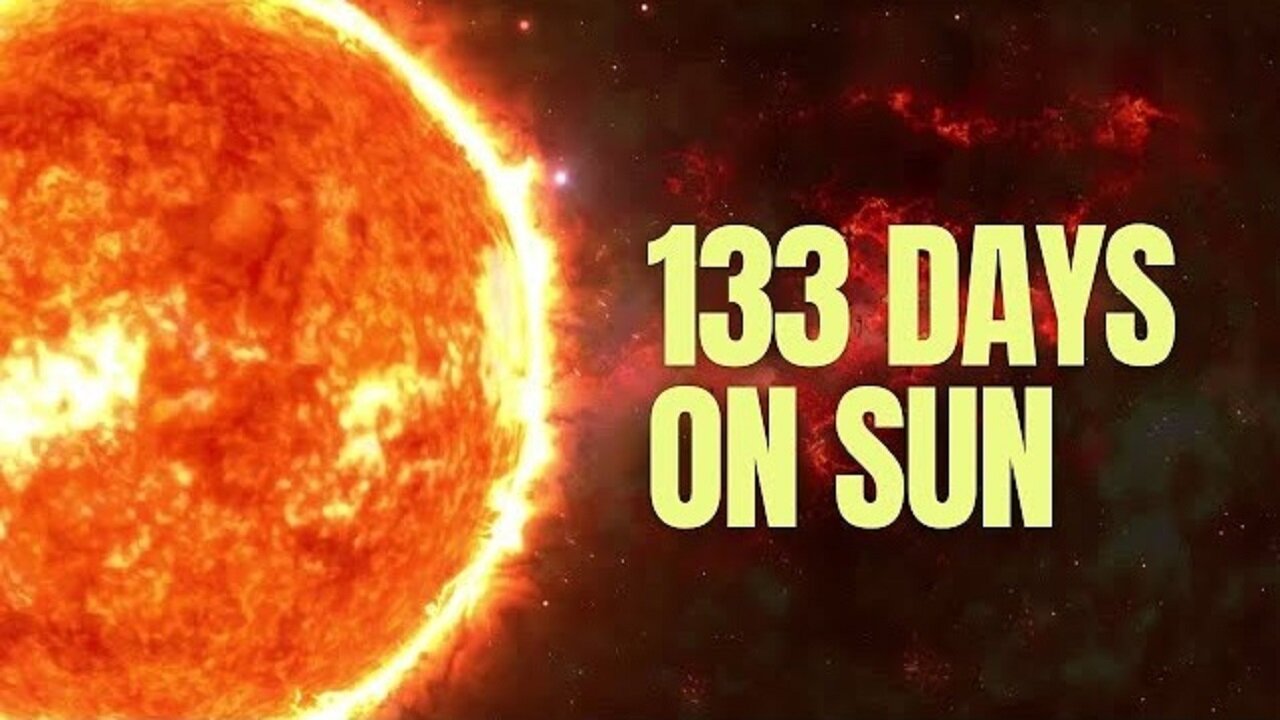Premium Only Content

133 Days On Sun
This video chronicles solar activity from Aug. 12 to Dec. 22, 2022, as captured by NASA’s Solar Dynamics Observatory (SDO). From its orbit in space around Earth, SDO has steadily imaged the Sun in 4K x 4K resolution for nearly 13 years. This information has enabled countless new discoveries about the workings of our closest star and how it influences the solar system.
With a triad of instruments, SDO captures an image of the Sun every 0.75 seconds. The Atmospheric Imaging Assembly (AIA) instrument alone captures images every 12 seconds at 10 different wavelengths of light. This 133-day time lapse showcases photos taken at a wavelength of 17.1 nanometers, which is an extreme-ultraviolet wavelength that shows the Sun’s outermost atmospheric layer: the corona. Compiling images taken 108 seconds apart, the movie condenses 133 days, or about four months, of solar observations into 59 minutes. The video shows bright active regions passing across the face of the Sun as it rotates. The Sun rotates approximately once every 27 days. The loops extending above the bright regions are magnetic fields that have trapped hot, glowing plasma. These bright regions are also the source of solar flares, which appear as bright flashes as magnetic fields snap together in a process called magnetic reconnection.
While SDO has kept an unblinking eye pointed toward the Sun, there have been a few moments it missed. Some of the dark frames in the video are caused by Earth or the Moon eclipsing SDO as they pass between the spacecraft and the Sun. Other blackouts are caused by instrumentation being down or data errors. SDO transmits 1.4 terabytes of data to the ground every day. The images where the Sun is off-center were observed when SDO was calibrating its instruments.
SDO and other NASA missions will continue to watch our Sun in the years to come, providing further insights about our place in space and information to keep our astronauts and assets safe.
Video Description:
On the left side of the frame is the full circle of the Sun. It appears in a golden yellow color, but splotchy and with thin yellow wisps extending from the surface. Some areas are very bright and others almost black. The whole Sun rotates steadily, with one full rotation taking 12 minutes in this time lapse. There are usually only a few bright regions visible at a time and they shift and flash like small fires. From these regions there are wispy loops reaching up above the surface that rapidly change shape and size.
-
 1:38:21
1:38:21
Redacted News
14 hours agoBREAKING! TRUMP THREATENS EGYPT WITH TWO CHOICES, BIOWEAPONS LABS IN MONTANA EXPOSED, JFK FILES
243K308 -
 1:08:49
1:08:49
vivafrei
21 hours agoNational Security Text Leak? Major Violation or Atlantic Fake News? Bad Trump Pick for CDC? & MORE!
188K62 -
 2:15:00
2:15:00
The Quartering
17 hours agoBOMBS Found At Tesla Dealer, Race HOAX Busted, Loans For Fast Food, Snow White Debacle & More!
324K386 -
 34:10
34:10
Jamie Kennedy
11 hours agoCoincidence DOES NOT Exist - Matrix Shattering Moments | Ep. 198- Hate To Break It To Ya
41.9K18 -
 1:12:05
1:12:05
Edge of Wonder
12 hours agoPyramid of Giza’s Mystery Hidden Beneath: Massive Structures Shatter Our History
51.4K16 -
 55:09
55:09
LFA TV
1 day agoTrump Officials ‘Signal’ a Message to Europe | TRUMPET DAILY 3.25.25 7PM
46.4K5 -
 11:46
11:46
Tundra Tactical
12 hours ago $1.49 earnedGEN Z Brit 3D Prints a WORKING Gun!
35.7K18 -
 1:18:17
1:18:17
Awaken With JP
16 hours ago20 yrs in Prison for Tesla Terrorists, 5 yr Covidversary, and More! - LIES Ep 84
121K79 -
 14:02
14:02
The Gun Collective
15 hours agoGuns That Just Came Out ... AND GUNCON 2025 ANNOUNCEMENT!
45.5K8 -
 1:01:18
1:01:18
In The Litter Box w/ Jewels & Catturd
1 day agoNO SHARED WAR PLANS | In the Litter Box w/ Jewels & Catturd – Ep. 769 – 3/25/2025
106K24